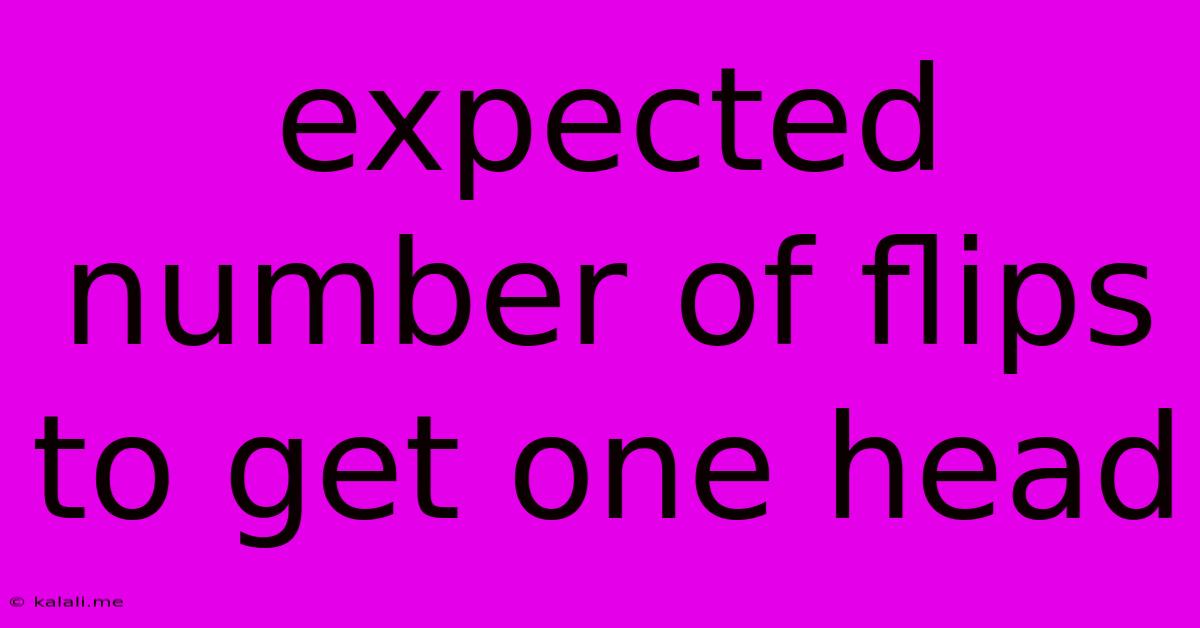Expected Number Of Flips To Get One Head
Kalali
Jun 02, 2025 · 2 min read

Table of Contents
Expected Number of Coin Flips to Get One Head
This article explores the expected number of coin flips needed to obtain at least one head. We'll delve into the mathematics behind this seemingly simple problem, using probability and geometric distributions to arrive at a clear and concise answer. Understanding this concept is crucial for grasping fundamental probability principles and has applications in various fields, including simulations and statistical modeling.
Understanding the Problem
The question we're tackling is: on average, how many times do we need to flip a fair coin before we get at least one head? This isn't about getting a specific sequence (like heads-tails-heads), but simply obtaining at least one head, regardless of the order.
The Approach: Geometric Distribution
The solution elegantly utilizes the geometric distribution. This probability distribution describes the number of trials needed to get the first success in a sequence of independent Bernoulli trials (experiments with only two outcomes: success or failure). In our case:
- Success: Flipping a head
- Failure: Flipping a tail
Since we're using a fair coin, the probability of success (getting a head) is p = 0.5. The probability of failure (getting a tail) is therefore 1 - p = 0.5.
The expected value (average number of trials) of a geometric distribution is given by the formula: E(X) = 1/p.
Calculating the Expected Number of Flips
Plugging our probability of success (p = 0.5) into the formula, we get:
E(X) = 1 / 0.5 = 2
Therefore, the expected number of coin flips to get at least one head is 2.
Intuitive Explanation
This result might seem intuitive. Imagine flipping a coin repeatedly. On average, you expect to get roughly an equal number of heads and tails. If you're aiming for at least one head, you can expect to need around two flips to achieve this. In the first flip, there's a 50% chance of success. If you fail, you'll need another flip, which will also have a 50% chance of success. Averaging these scenarios yields an expected value of two flips.
Beyond the Fair Coin: Exploring Different Probabilities
While we focused on a fair coin (p = 0.5), the geometric distribution allows us to explore scenarios with biased coins. For example, if we had a biased coin with a 75% probability of landing heads (p = 0.75), the expected number of flips would be:
E(X) = 1 / 0.75 ≈ 1.33
This demonstrates that with a higher probability of success, the expected number of flips decreases, which aligns with our intuition.
Conclusion
The expected number of coin flips needed to get at least one head is a classic example showcasing the power of geometric distribution in probability theory. The calculation is straightforward, yet it reveals important insights into probabilistic modeling and expectation values. Understanding this concept builds a strong foundation for tackling more complex problems involving probability and statistics.
Latest Posts
Latest Posts
-
No Water Pressure In House With Well
Jun 04, 2025
-
Why Doesnt My Cat Like To Be Held
Jun 04, 2025
-
How To Put Dots Between Words On Phone
Jun 04, 2025
-
How To Change A Dewalt Drill Bit
Jun 04, 2025
-
How Did Eleven Lose Her Powers
Jun 04, 2025
Related Post
Thank you for visiting our website which covers about Expected Number Of Flips To Get One Head . We hope the information provided has been useful to you. Feel free to contact us if you have any questions or need further assistance. See you next time and don't miss to bookmark.